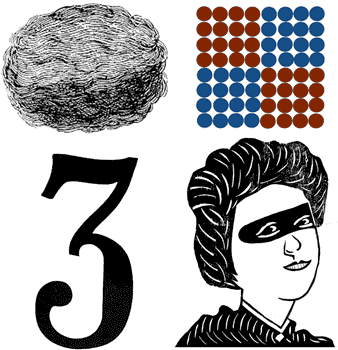Vítejte na webovém katalogu Lublin Storehouse autorky Ulrike Grossarth
Jasnovidec z Lublinu, Jakub Jicchak Horowitz, předpověděl za jízdy koňským spřežením lublinským lesem, že:
„…jednou bude na tomto místě vyjevena tajná nauka, v jejímž středu stane božská Šechina“
Lublin Storehouse – Lublinské skladiště
V konceptu výstavy Lublinské skladiště Ulrike Grossarth tematizuje motivy archiválií sesbíraných během posledních deseti let v polském Lublinu a jeho okolí. Autorka pracuje s prvky středo-východoevropského prostoru, který se fundamentálně proměnil v důsledku totalitních režimů dvacátého století a i v současnosti je opět ohrožován narůstajícími nacionalistickými tendencemi. Sesbíraný materiál je na výstavě konfrontován se západoevropskou kulturní tradicí reprezentovanou Diderotovou a D´Alembertovou Encyklopedií (Paříž, 1751). Výsledkem multiplikace prostředí a podnětů je potom možné získávat detailní zdroje informací pro porovnávání příčin a následků konkrétních historických událostí.
Metodologický výzkum pomocí projektových cest po východní Evropě
Během uplynulých let jsme v mém ateliéru na Akademii výtvarných umění v Drážďanech vypracovali metodu empirického výzkumu uměleckých otázek inklinujících k tématům s obecnou relevancí a tvořících živoucí podstatu pojmu kultura. V této souvislosti jsme se zabývali dílem Emmanuela Levinase, zejména jeho definicemi rozdílů mezi řeckým a hebrejským myšlenkovým rámcem, v nichž se odráží odklon od důrazu kladeného na teorii a naopak inklinace směrem k etice. Současně se stálou součástí naší práce stala židovská interpretační tradice založená na Talmudu. Dalo by se říci, že jsme se soustředili na kultivaci paradoxního způsobu přemýšlení, v němž je skutečnost ukládána jakoby ve vrstvách, které na sebe kontinuálně reagují a navzájem se různými způsoby překrývají prostřednictvím průběžné reinterpretace Tóry. Během posledních let jsme tato témata završili intenzivním studiem chasidské tradice. Jsme si však samozřejmě vědomi toho, že jakákoli interpretace daného tématu bude ovlivněna kontextem židovské kultury existující po šoa.
Od roku 2003 jsme cestovali do Polska a na Ukrajinu, na konkrétní místa, která jsou s danými tématy rozmanitým způsobem provázaná. Během krátkodobých exkurzí nám šlo především o to, abychom tuto oblast velmi intenzivně vnímali, a také o to, abychom své zážitky byli schopni konfrontovat s historickým rámcem a kulturním odkazem daného regionu. Tázali jsme se po tom, za jakých podmínek vznikají pozitivní procesy, které mohou odstartovat cennou, významově přínosnou společenskou změnu. Mimo jiné jsme se v těchto souvislostech zabývali otázkami vývoje identity, „ne“činnosti, paradoxy, cirkulárními systémy a politickými gesty. V rámci tohoto kontextu vznikly rovněž mé vlastní umělecké práce nazvané Lublinské projekty (Lubliner Projekte).
Welcome to the Web catalog of Lublin Storehouse by Ulrike Grossarth
Jaakow Jizchak Horowitz, the Seer of Lublin an eighteenth-century zaddik prophesized during a journey through the forest of Lublin by horse-drawn carriage, that “…the entire revealed and hidden teachings together with the settling down of the Shekhinah will once be present here.”
Lublin Storehouse
In the exhibition Lublin Storehouse, Ulrike Grossarth works with motifs from her archive gathered during her stays in Lublin (Poland) and its surroundings over the past ten years. These motifs are elements from Central Eastern Europe, a region that underwent fundamental changes under the violent regimes of the 20th century and that is threatened by nationalist tendencies again today. This material is juxtaposed with a West European “cultural preserve”: the Encyclopédie by Diderot & D’Alembert (Paris 1751). In this way, a milieu is created where categories are multiplied and unconscious, unresolved and still powerful details of historical events may appear.
Methodological Research via Travel Projects in Eastern Europe
For many years, in my class at the Dresden Academy of Fine Arts, we have been working on a method of empirically extending artistic themes, expanding them toward central themes that are of general relevance in order to develop a lively concept of culture. In this context we read the work of Emmanuel Levinas and reflected on his differentiation between Greek and Hebrew thinking, in which he elaborates fundamental new approaches to another ethics.
Meanwhile, the traditional Jewish exegesis based on the Talmud has become an integral part of our work. That is, the training and cultivation of a paradoxical way of thinking that remains present in layers that are continually superimposing on each other in different ways through a constant reinterpretation of the Torah. In the last few years we have complemented these topics by intensive studies of Hasidic tradition. Of course this interest must also be viewed against the backdrop of Jewish culture since the Shoah. Since 2003 we have traveled to locations, in particular in Poland and Ukraine, that relate in various ways to this nexus of topics. On the eight- to ten-day excursions, the goal was to continually carry out courses of action in a highly concentrated form, and thereby to consider everything, the excursion itself, the discussions and individual actions, from a formal point of view, and to purposefully put this into confrontation with the historical forms and “cultural preserves” of the respective geographic areas. Our question was: under what conditions do procedural structures emerge that might be valuable or meaningful in other ways? Our topics included, among others: identity in progress, work“lessness,” paradoxes, circular systems, and the playful gestures of the political. My own works, which I have called the Lubliner Projekte (Lublin Projects), also developed out of these contexts.
